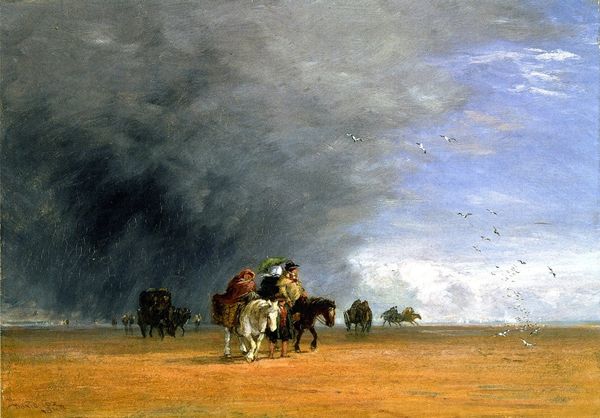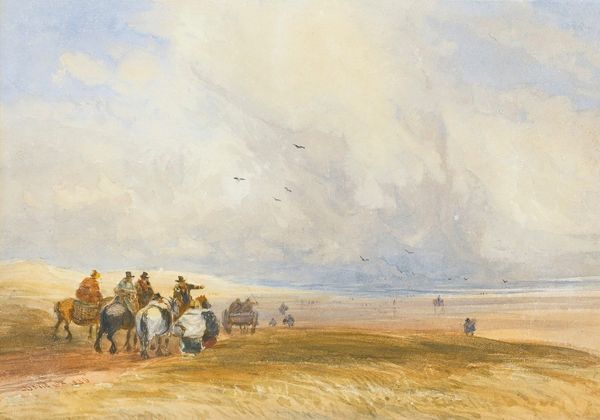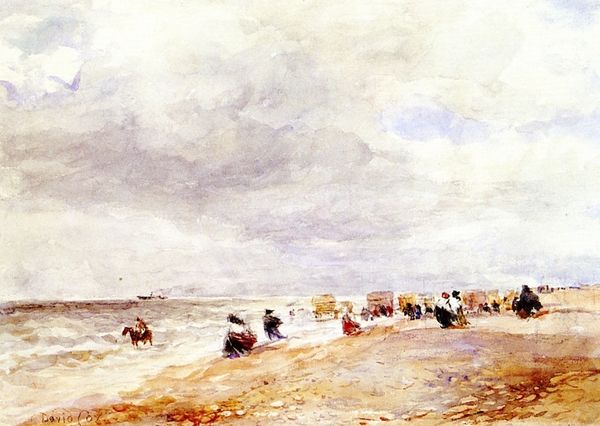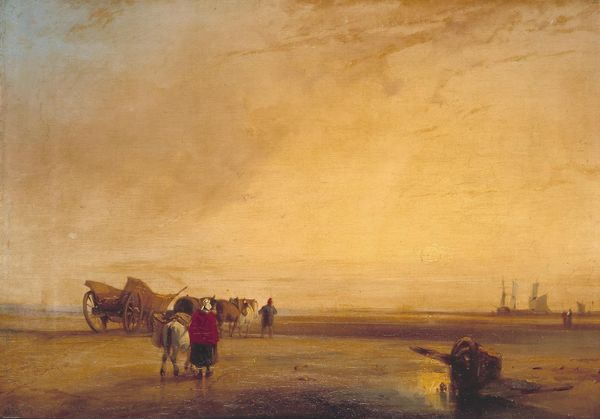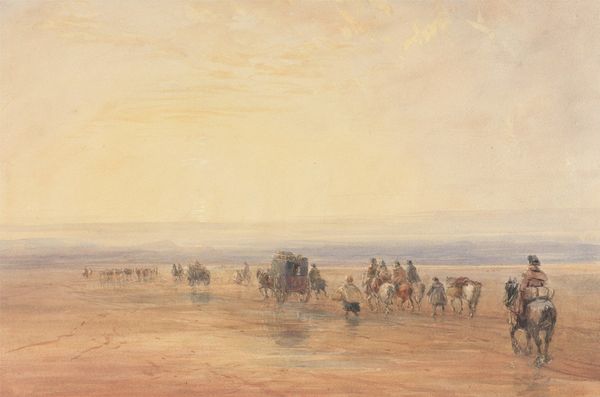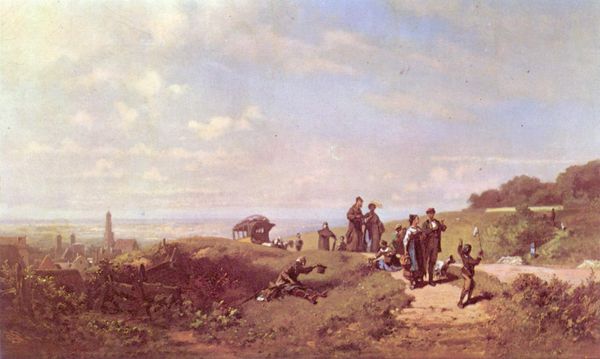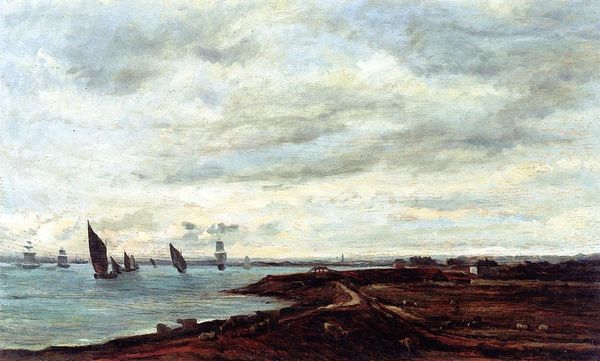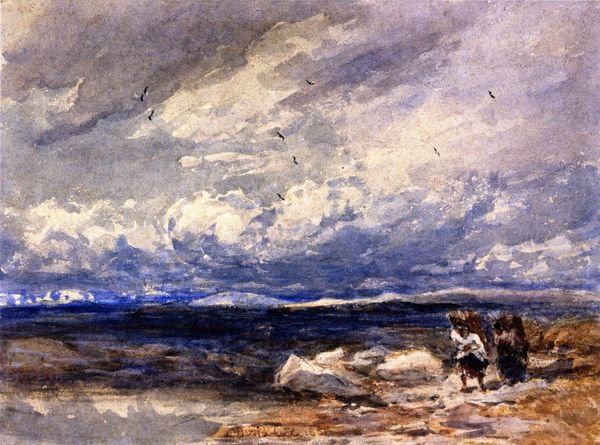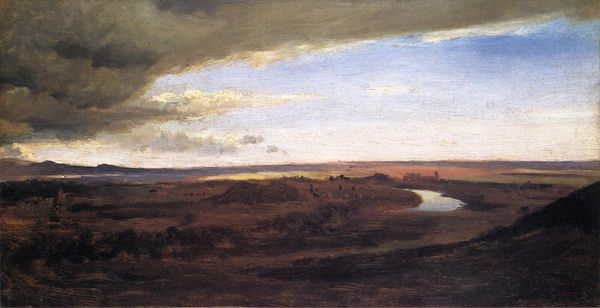
plein-air, watercolor
#
sky
#
plein-air
#
landscape
#
charcoal drawing
#
impressionist landscape
#
watercolor
#
romanticism
#
cloud
#
watercolour illustration
#
watercolor
Copyright: Public domain
Curator: David Cox's "Ulverston Sands," created in 1835, captures a scene both serene and subtly melancholic. What strikes you immediately? Editor: That sky! It dominates the landscape. Those swirling, towering clouds evoke a sense of the sublime, that awe mingled with trepidation. There is a latent violence, or at least potent, pent-up force in their billowing forms. Curator: The use of watercolor really lends itself to that feeling. Watercolors were becoming increasingly popular for plein-air studies at this time and were particularly embraced for their ability to convey atmospheric conditions. Cox exploits this perfectly here. It's interesting to consider how his rapid brushstrokes create an ephemeral scene, almost as though the landscape is in constant flux. Editor: And what do the figures represent? The group clustered by the cart and those dispersed on horseback across the sands... what meanings do they contribute to the visual story here? Curator: These human figures establish scale, reminding us of nature's grandeur, and by extension, humanity's comparative smallness. Also consider the fact that we view them in a time when Romanticism's impact was felt, in part, as a longing to escape the rapid urbanization then happening. Cox often depicted working people in his landscapes, suggesting an idealised vision of a simpler life in harmony with nature. Editor: There's a distinct pastoral symbolism happening within this larger aesthetic vision then? But aren’t the symbols quite restrained? Curator: I'd suggest yes. The figures, rendered with broad strokes, aren’t individuals so much as representative types – humble folk braving the elements. The dog adds a homely touch but the eye is ever-pulled upward toward those sublime, celestial forms. The image hints at something deeper, perhaps, beyond mere rural life. There's a certain introspection at play, no? Editor: Absolutely. Cox positions nature, the weather patterns themselves, as symbols of larger emotional and societal forces at play, reflecting perhaps anxieties that are as pertinent today as they were almost two centuries ago. Curator: A powerful piece that leaves us contemplating the relationship between humanity and its surroundings. Editor: A potent depiction of our place in the world, seen and unseen.
Comments
No comments
Be the first to comment and join the conversation on the ultimate creative platform.
